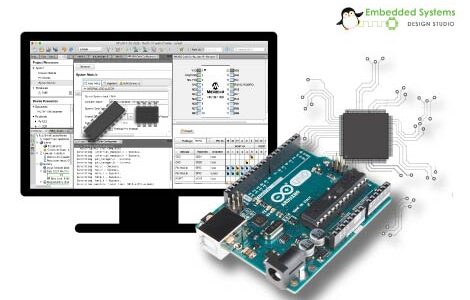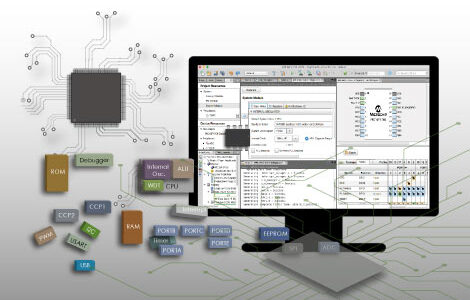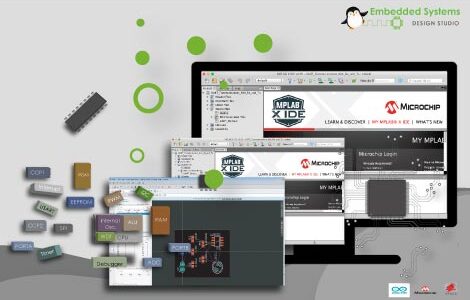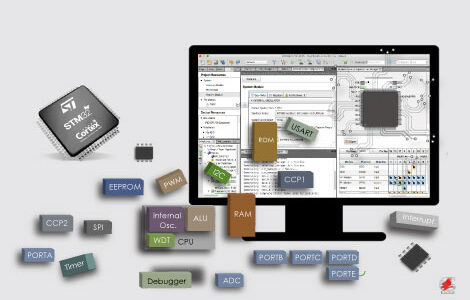Basic Embedded Systems Training Course Overview
This course is designed for beginners who want to step into the world of embedded systems. The training introduces fundamental concepts, programming techniques, and real-world applications using popular microcontroller platforms like Arduino, 8051, PIC18F4550, and ARM Cortex-M3. By the end of the course, participants will have a solid foundation to advance their embedded systems knowledge.
Course Title:
Basic Embedded Systems Training: Programming Microcontrollers from Beginner to Advanced
Course Overview:
This beginner-friendly course offers a comprehensive introduction to embedded systems. Participants will learn to program and interface microcontrollers with peripherals, simulate designs, and develop simple real-world applications using widely used platforms like Arduino, 8051, PIC18F4550, and ARM Cortex-M3 devices.
Target Audience:
- Beginners interested in embedded systems and microcontroller programming.
- Students or hobbyists looking to explore microcontrollers with hands-on experience.
- Professionals transitioning to embedded systems development.
Prerequisites:
- Basic knowledge of C programming.
- Familiarity with electronics and digital circuits (optional but helpful).
Course Duration:
16 weeks (3-4 hours per week), with self-paced options available.
Each microcontroller module is covered in 4 weeks.
Course Outline and Learning Modules
Module 1: Fundamentals of Embedded Systems (Week 1-2)
- Introduction to embedded systems and their applications.
- Microcontroller vs. microprocessor: Key differences.
- Overview of development tools and software environments.
- Basics of programming languages used in embedded systems (C/C++).
- Hands-on setup of IDEs (Arduino IDE, Keil, MPLAB, STM32CubeIDE).
Module 2: Programming Arduino Microcontrollers (Week 3-6)
- Overview of Arduino: Architecture, pinout, and features of Arduino Uno.
- Basic Programming: Writing your first program (LED blink).
- Peripherals Programming:
- Digital I/O: LEDs, buttons.
- Analog I/O: Potentiometers, sensors (e.g., LM35).
- PWM: LED brightness control, servo motor control.
- UART: Communication with the serial monitor.
- Real-World Applications:
- Building a temperature monitoring system.
- Controlling devices with an IR remote.
Module 3: 8051 Microcontrollers (Week 7-10)
- Introduction to 8051 Architecture: Memory organization, registers, and ports.
- Basic Programming:
- GPIO: LED and button interfacing.
- Timers and Counters: Generating delays and counting events.
- UART: Serial communication with a PC.
- Interrupts: Handling external events.
- Peripheral Interfacing:
- LCD display, keypad, seven-segment displays.
- ADC and DAC: Interfacing analog sensors.
- Project: Digital clock with 7-segment display and real-time clock (RTC).
Module 4: PIC18F4550 Microcontrollers (Week 11-14)
- Overview of PIC18F4550 Architecture: Key features and peripherals.
- Getting Started with MPLAB X IDE and XC8 Compiler.
- Peripheral Programming:
- GPIO: LED and switch interfacing.
- Timers: Generating delays and PWM for motor control.
- ADC: Interfacing sensors like LM35 and potentiometers.
- UART: Communication with terminal software.
- I2C and SPI: Interfacing EEPROM and RTC.
- Real-World Applications:
- Data logger using EEPROM.
- PWM-based DC motor speed control.
Module 5: ARM Cortex-M3 Microcontrollers (Week 15-16)
- Introduction to ARM Cortex-M3 Architecture: Core features and memory organization.
- Setting Up STM32 Development Environment: STM32CubeIDE and STM32CubeMX.
- Basic Programming:
- GPIO: LED blinking and button press.
- Timers: Generating PWM and delays.
- ADC: Reading analog sensor data.
- UART: Sending data to a serial terminal.
- Peripheral Integration:
- LCD and keypad interfacing.
- Real-time clock (RTC) configuration.
- Project: IoT-enabled temperature and humidity monitoring system using ESP8266.
Capstone Project (Optional Extension)
Participants choose a microcontroller and develop a complete embedded system.
Example Projects:
- Home automation system using Arduino with relays and sensors.
- Traffic light control system using 8051 microcontroller.
- Data acquisition system with PIC18F4550 and SD card.
- IoT-based weather monitoring system with ARM Cortex-M3 and Wi-Fi.
Course Features:
- Hands-on learning with practical exercises for every module.
- Simulation support with Proteus for 8051 and PIC18F4550.
- Hardware setup guides for Arduino and ARM Cortex-M3 development boards.
- Comprehensive materials: Circuit diagrams, source code, and troubleshooting tips.
- Interactive Q&A sessions to resolve doubts.
- Certificate of Completion for participants completing all modules and the capstone project.
Learning Outcomes:
By the end of this course, participants will:
- Understand the basics of embedded systems and microcontroller programming.
- Gain practical experience in programming Arduino, 8051, PIC18F4550, and ARM Cortex-M3.
- Develop and debug real-world embedded applications.
- Build confidence in transitioning to advanced embedded system design.
- Be well-prepared for job roles in embedded systems development.










